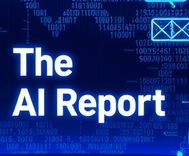Campaign ad utilizes artificial intelligence, prompting the question: what impact will ai have on the 2026 election?

The AI Report
Daily AI, ML, LLM and agents news
AI in Politics: What a Viral Ad Reveals About the 2026 Election Landscape
A simple local campaign ad featuring just three direct-to-camera testimonials has suddenly captured national attention. Why? Because all the people in the ad are fake, created entirely by artificial intelligence prompts. This ingenious, albeit controversial, use of AI is prompting serious questions about its potential impact on the upcoming 2026 elections.
The ad's creator, art dealer Esther Kim Varet, who is running in the Democratic primary in California’s 40th congressional district, explained her intention wasn't to deceive. Rather, she consciously used the 'fakeness' of the medium to highlight a political problem and 'weaponize' it for a political message. The ad was remarkably quick and inexpensive to produce – created in just 30 minutes on a phone or laptop during a family road trip. Kim Varet sees this ease of creation as a potential benefit, suggesting it could level the playing field for younger candidates who lack the half a million dollars corporate PACs might spend on traditional ads.
While the ingenuity is recognized, experts warn of the darker side. Annette Zimmerman, a professor at the University of Wisconsin, Madison, notes that current AI models can create content that is incredibly persuasive and difficult for ordinary citizens to detect as AI-generated. This raises concerns about how corrosive AI could be to political discourse, making it challenging for voters to discern legitimate content.
The rapid advancement of AI stands in stark contrast to the slow pace of legislative action. Congress has so far done little to regulate artificial intelligence in this context. A bipartisan bill, the Protect Elections from Deceptive AI Act, has been introduced but has not gained significant traction. One sponsor, Senator Josh Hawley, emphasizes the need for guardrails not only to protect voters from deceptive AI but also to protect individuals' fundamental right to control their own image and likeness.
Hawley argues that just as college athletes have the right to profit from their likeness, every American should have the right to prevent AI from taking their name, image, and likeness without permission or compensation. He highlights that AI is currently collecting and using this data without consent, tracking individuals and even their children online and using their images without asking.
Adding another layer of complexity, President Donald Trump’s proposed tax agenda, dubbed “One Big Beautiful Bill,” contains a provision that would restrict states from regulating artificial intelligence for 10 years. This has sparked outrage, even among some Republicans who voted for the bill without realizing the provision was included. Representative Marjorie Taylor Greene publicly expressed her strong opposition, calling it a violation of state rights and potentially dangerous, especially given the unknown capabilities of AI over the next decade. She argues the provision needs to be removed in the Senate.
This federal-state conflict exacerbates the regulatory vacuum. Zimmerman calls the lack of a federal framework one of the worst things for American consumer rights protections. While state-by-state regulation might be piecemeal, she contends that any regulation is better than none.
Kim Varet acknowledges the unpredictable nature of how other candidates might use AI, expressing doubt that future AI ads will be as self-aware as hers. She believes that ultimately, how candidates choose to use AI and whether they disclose its use will reveal more about their intentions than any legislation currently in place. She pessimistically notes that history shows legislation struggles to keep pace with technological evolution, suggesting society will grapple with these issues for a long time until AI regulation becomes a legislative priority – which, she states, it has not been.
The viral AI campaign ad serves as a potent early indicator of the technological and ethical challenges facing the 2026 election cycle. Without clear regulations and robust detection methods, voters face an increasing burden to verify the authenticity of political messaging, while candidates grapple with the potential power and pitfalls of this rapidly evolving technology.

The AI Report
Author bio: Daily AI, ML, LLM and agents news
